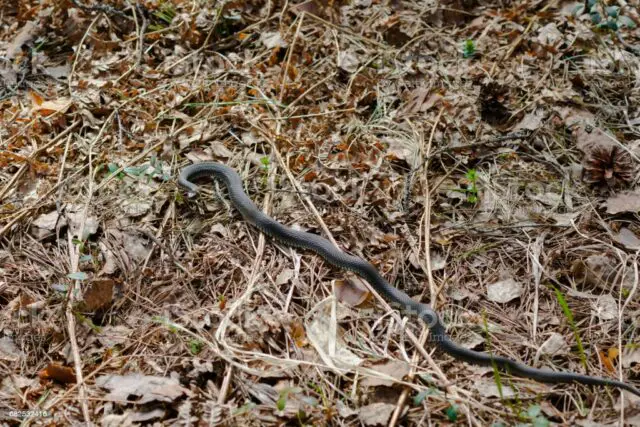A snake known in Costa Rica as “Plato Negro” (Lachesis melanocephala) was found and rescued by park rangers after an alert from residents of the Rancho Quemado community in Osa, Puntarenas.
According to the National System of Conservation Areas (Sinac) this is a species with “threatened population”, due to deforestation and alteration of the forests, it tends to disappear in some localities and few sightings are recorded.
The park rangers of the Golfo Dulce Forest Reserve, together with the biologist of the Osa Conservation Area, assessed the snake, which was in perfect condition, and later proceeded with its release in a safe place, close to where it was found, to avoid changing its home range.
Avoiding harm
The Deputy Minister of Environment, Rafael Gutiérrez, explained that this snake is a rare species, little known, and endemic to the southern zone, “a sighting of this type is of great relevance for the country. The community is thanked for the correct action, not having caused damage and calling the corresponding authorities to attend to the situation, which guaranteed the protection of this animal,” he said.
Officials of the Osa Conservation Area indicated that there have been previous reports of running over individuals of this species, in addition to deforestation and alteration of the forests, which may be having a significant negative impact on the species.
They ask to be alert
The Vice Minister of the Environment asked the population to alert about similar cases of wildlife, or make complaints, by calling the telephone number 1192 or the nearest regional or subregional office of MINAE.
In the event that people have interactions with wildlife in their homes, Sinac together with other institutions have created the web page: “Costa Rica Silvestre”, a site that offers guidance and information on how to proceed when different animal species visit our areas.
The Black Plate Snake
It is the rarest species of all the Lachesis, this is because it has a limited distribution and is endemic to our country. It can be found in the Osa Peninsula, from sea level to 1800 meters of altitude.

This is one of the largest vipers in Costa Rica and one of the largest venomous snakes in the world, they can reach and exceed a length of approximately 200 centimeters.
They feed mainly on small mammals such as rodents. It is nocturnal and uses underground burrows made by other animals to hide. When threatened, it tends to roll up its body, raising its head.

For those who have experienced shifts in consciousness and know that more peace, joy, and love awaits in a better living environment. A bold shared vision. A living community and hub for innovation. A sustainable ecosystem for living and working. A model for the new future.
